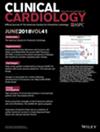Prognostic Value of Platelet to Lymphocyte Ratio for Myocardial Infarction: A Systematic Review and Meta-Analysis
Abstract
Background
Correlations between platelet-to-lymphocyte ratio (PLR) and prognosis in patients with acute myocardial infarction (AMI) are reported in more studies, though there is no evidence-based data.
Methods
Databases (PubMed, Embase, Web of Science, and Cochrane Library) were searched from their inception to April 19, 2024, to retrieve articles discussing associations between PLR and clinical outcomes in AMI patients. The primary outcomes, comprising mortality and major adverse cardiovascular events (MACE), were assessed with odds ratios (OR) and their 95% confidence intervals (CI). Sensitivity analyses and subgroup analyses were utilized to probe the results' robustness and potential heterogeneity sources. Analysis was carried out utilizing the software of Review Manager 5.4 & STATA 15.0.
Results
This article selected 18 cohort studies, covering 16,545 AMI patients. The meta-analysis found that elevated PLR was significantly linked with mortality in AMI patients (OR = 1.06; 95% CI: 1.04–1.08, p < 0.00001). Additionally, PLR was highly linked with MACE risks in AMI patients (OR = 1.495; 95% CI: 1.24–1.80, p < 0.0001). Further subgroup analyses discovered a significant correlation between PLR and mortality in prospective studies (OR = 1.07; 95% CI: 1.05–1.09), studies with a sample size ≥ 500 (OR = 1.06; 95% CI: 1.04–1.08), patients under 70 years of age (OR = 1.07; 95% CI: 1.05–1.09), studies from European regions (OR = 1.08; 95% CI: 1.06–1.10), patients with ST-elevation myocardial infarction (OR = 1.09; 95% CI: 1.07–1.11), and those with a PLR cutoff value < 140 (OR = 1.07; 95% CI: 1.05–1.09) (p < 0.05). For MACE, similar subgroup analyses also proved an obvious correlation between PLR and MACE in the aforementioned subgroups (p < 0.05).
Conclusion
PLR values are linked with mortality and MACE in AMI patients. PLR serves as an effective prognostic biomarker for AMI patients, providing precious opinions for sensible therapeutic decisions in AMI treatments.


 求助内容:
求助内容: 应助结果提醒方式:
应助结果提醒方式:


